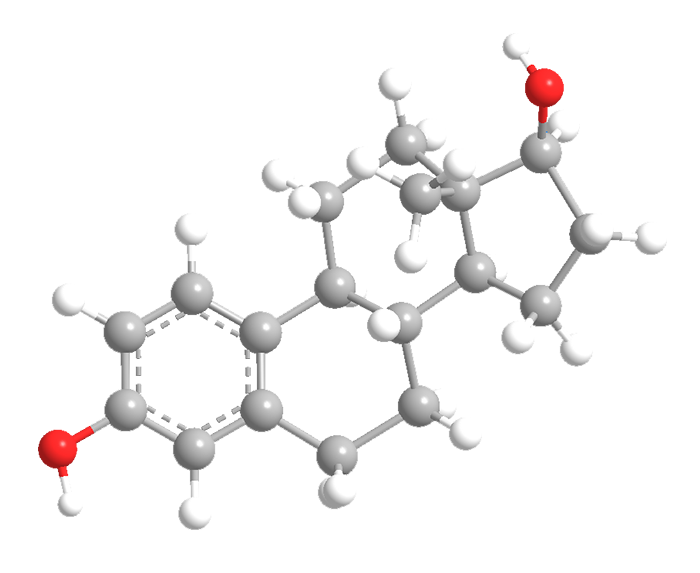

The Merck Index calls estradiol “the most potent naturally occurring estrogen in mammals”. Females produce it in the ovaries and, during pregnancy, in the placenta. In males, estradiol is a metabolic product of testosterone.
D. W. MacCorquodale and co-workers isolated estradiol from sows’ ovaries in 1936. Soon several researchers prepared it from other steroids. About 40 years later, two research teams reported its total synthesis.
Much research has been devoted to estradiol as a sex hormone, but it recently turned up in a study of eating disorders. K. L. Klump and co-workers at Michigan State University tracked estradiol levels in twin girls after midpuberty and found that the hormone correlated with eating disorders in identical, but not fraternal, twins. Klump believes that estradiol, a gene transcription factor in the brain, may switch on genes related to the disorders.
MOTW update:
August 03, 2020
Estradiol is the major, and most potent, estrogen sex hormone in female vertebrates, especially mammals. In this year of the COVID-19 pandemic, the abundance of estradiol in women may be one reason that women have a lower risk of infection by—and death from—the virus. But so far the evidence is far from clear.

Learn more about this molecule from CAS, the most authoritative and comprehensive source for chemical information.
Molecule of the Week needs your suggestions!
If your favorite molecule is not in our archive, please send us a message. The molecule can be notable for its current or historical importance or for any quirky reason. Thank you!
Stay Ahead of the Chemistry Curve
Learn how ACS can help you stay ahead in the world of chemistry.

